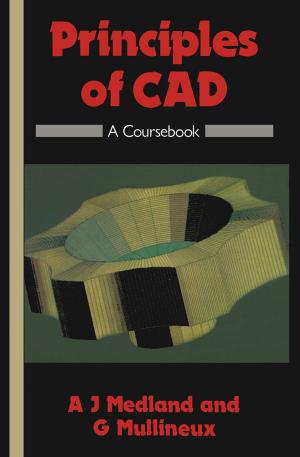| Author: | Ruth Bulger | ISBN: | 9781461587170 |
| Publisher: | Springer US | Publication: | December 6, 2012 |
| Imprint: | Springer | Language: | English |
| Author: | Ruth Bulger |
| ISBN: | 9781461587170 |
| Publisher: | Springer US |
| Publication: | December 6, 2012 |
| Imprint: | Springer |
| Language: | English |
This book was not written for contemporary scientists with a major interest in cell biology. Rather, it was prepared for the serious and inquiring student who mayor may not have had an extensive background in the sciences but who is interested in exploring or reviewing in depth the current body of knowledge about cellular structure and function. We have tried to convey a sense of the expectant excitement that characterizes the modem-day cellular biologist and we regret any scientific jargon that may have crept into the text as a result of this effort. We have selected and assimilated experiments done by numerous scien tists and have used them to explain how cells work. In doing this, we have concentrated on animal cells because we know more about them. We have come to a deeper appreciation, while preparing this book, of the limitations in understanding the inner workings of the cell and have come to realize more than ever that we are, in these matters, still "looking through a glass darkly. " An explosively increasing body of knowledge about the cell and its organelles has become available through the diligent work of numerous biologists. Thus it is impractical to attempt to credit each of these scientists for all of their important contributions: The listed references are neither exhaustive nor are they necessarily the first report of a finding.
This book was not written for contemporary scientists with a major interest in cell biology. Rather, it was prepared for the serious and inquiring student who mayor may not have had an extensive background in the sciences but who is interested in exploring or reviewing in depth the current body of knowledge about cellular structure and function. We have tried to convey a sense of the expectant excitement that characterizes the modem-day cellular biologist and we regret any scientific jargon that may have crept into the text as a result of this effort. We have selected and assimilated experiments done by numerous scien tists and have used them to explain how cells work. In doing this, we have concentrated on animal cells because we know more about them. We have come to a deeper appreciation, while preparing this book, of the limitations in understanding the inner workings of the cell and have come to realize more than ever that we are, in these matters, still "looking through a glass darkly. " An explosively increasing body of knowledge about the cell and its organelles has become available through the diligent work of numerous biologists. Thus it is impractical to attempt to credit each of these scientists for all of their important contributions: The listed references are neither exhaustive nor are they necessarily the first report of a finding.















